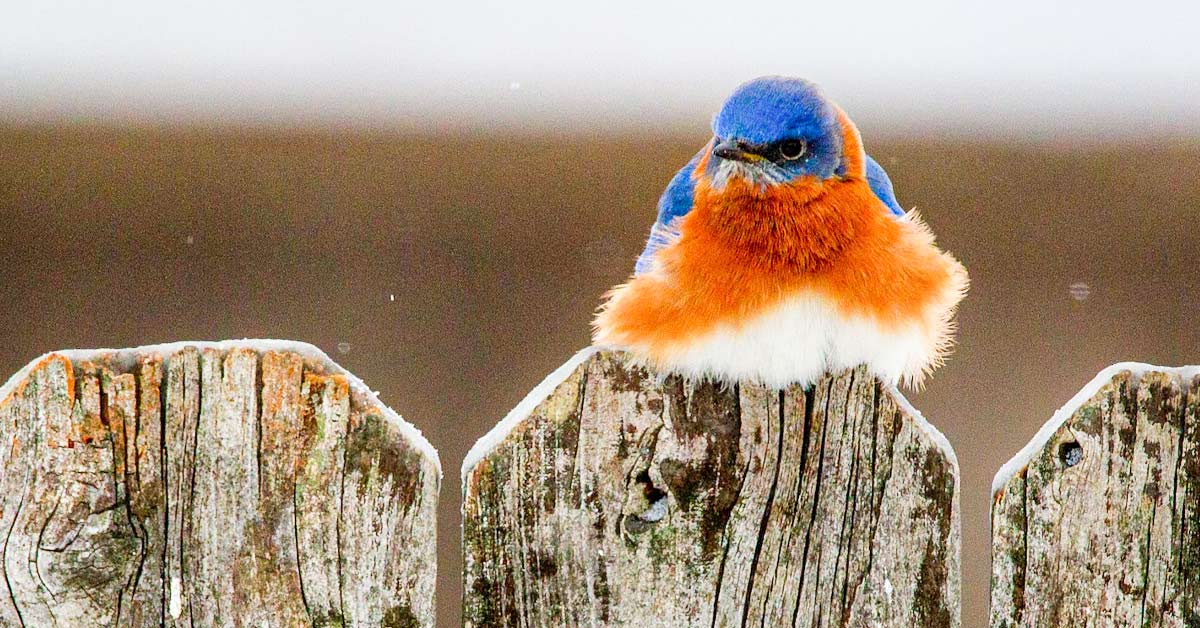Not all birds migrate to other warmer parts of the country once cold weather creeps in, but if you want to see some West Virginia Birds winter birds, this post should answer your question.
Also, learn about how these winter birds stay warm throughout this season, and how they find their food if everything in outdoors is cold, icy or covered in snow.
8 West Virginia Winter Birds to Watch Out For
Having grown up in Pittsburgh, I’ve had the pleasure of seeing many of these birds during the cold months of the year.
Let’s start with one of my absolute favorites.
1. Bald Eagle

Bald eagles, the national symbol of the United States, are found in West Virginia.
While some of them do migrate south for the winter, other Bald Eagles live here year-round often perched high in a tree by a river/lake.
Bald Eagle Appearance
- Length: 90 to 110 cm
- Weight: 210 ounces
- Wingspan: 240 cm
The female is usually slightly larger than the male.
But aside from their sizes, Bald Eagles look identical with yellow bills and feet, golden eyes, and a white-feathered head.
Bald Eagles aren’t actually bald, but their white heads contrast their darker-colored feathers quite dramatically that they look somewhat bald.
Where to find Bald Eagles in West Virginia
Bald Eagle sightings used to be very rare in West Virginia, but successful breeding and conservation efforts increased the population of these majestic birds of prey in the area significantly. Today, it is common to see Bald Eagles flying in Bluestone River, the New River, and Bluestone Lake.
2. White-breasted Nuthatch
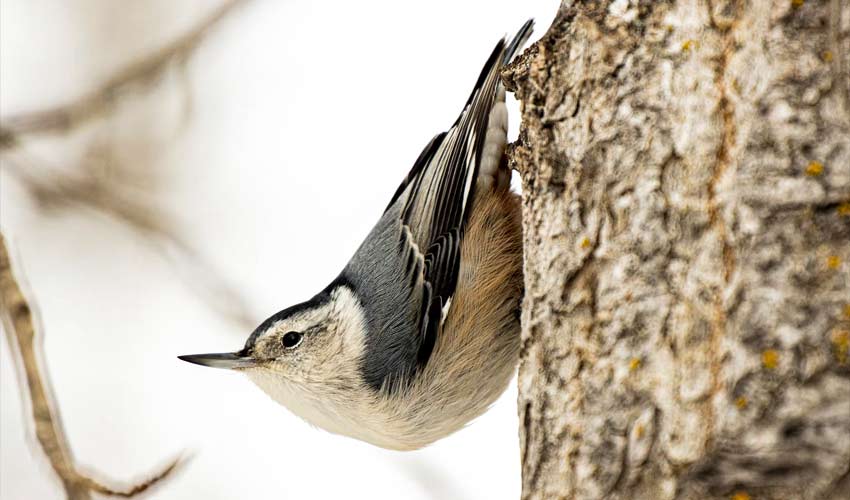
White-breasted Nuthatches are common year-round backyard bird feeders throughout West Virginia.
They’re less visible in winter due mostly to their camouflaging plumage, but they can withstand the local weather.
White-Breasted Nuthatches Appearance
- Length: 14 to 16 cm
- Weight: About 1 to 1.5 ounces
- Wingspan: 20 to 27 cm
Like many nuthatches, the White-breasted Nuthatch is a small active bird with a large head, short tail, and wings, but with strong feet and distinguished bills.
White-breasted Nuthatches, as their name suggests, have a white face and chest, bluish-gray backs, chestnut-brown lower bellies (and under tails), then a black cap.
Where to find White-breasted Nuthatches in West Virginia
In West Virginia, you can find White-breasted Nuthatches in forests (of pine, cedar, spruce or fir trees), woodland edges, parks, and even backyards with birdfeeders or trees.
3. Carolina Wren
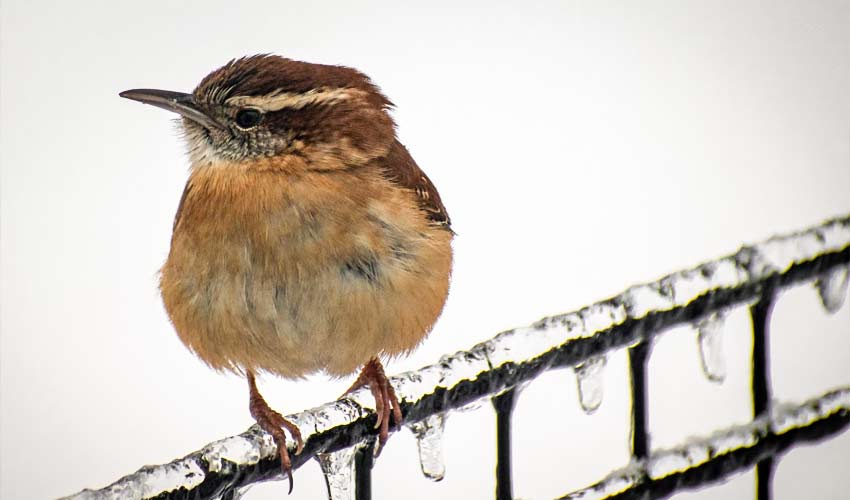
If you’ve been worrying about WV winter birds, especially when colder months get harsh, the Carolina Wrens are one of the birds that would take advantage of the feeding stations you prepare in your backyard.
These birds rarely visit backyards during the summer (they mainly feed on insects in the forests), but peanuts, sunflower seeds, and mealworms can go a long way for these wrens during winter.
Carolina Wrens Appearance
- Length: 14 to 16 cm
- Weight: 0.6 to 1 ounce
- Wingspan: 27 to 30 cm
Carolina Wren is one of the many wren species.
This type of bird has a colorful reddish-brown plumage with ivory and pale yellow underbellies, small black bead eyes, a distinct white throat, and an eyebrow-like white eye line.
The edges of their wings and tails are tipped with dark colors, while their bills are long and thin.
They also have quite the lovely song.
Where to find Carolina Wrens in West Virginia
Carolina Wrens don’t migrate (pairs keep a territory year-round), but they can be hard to find in the summer months because they are able to find food in the woods and other thickly vegetated areas in West Virginia.
It’s a totally different scenario in the winter when Carolina Wrens visit suet-filled feeders on residential backyards.
4. Carolina Chickadee
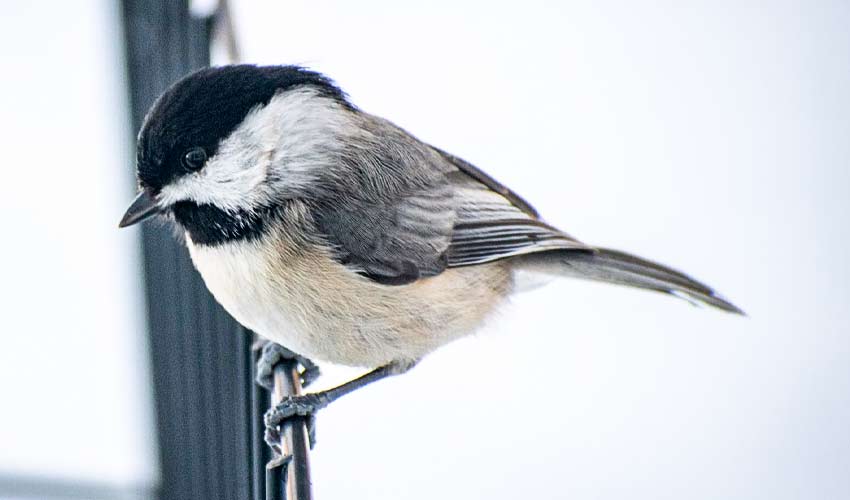
Apparently there are a lot of Carolina themed birds in the West Virginia area.
We head that way in the summer and the birds head this way in the winter.
Carolina Chickadee Appearance
- Length: to cm
- Weight: 0.3 to 0.5 ounce
- Wingspan: 15 to 20 cm
Carolina Chickadees are bluish, gray with a very dramatic black cap, bib, and neck, white cheeks, light-colored belly, and gradient gray plumage in the back, wings, and tail.
They look similar to the black-capped Chickadee (they interbreed that’s why their range overlaps).
Where to find Carolina Chickadees in West Virginia
Carolina Chickadees have adapted well to suburban and urban West Virginia, visiting backyards freely throughout the year, but they call mixed woodlands, parks, and swampy areas their homes.
These WV winter birds don’t migrate, so you can find these small birds throughout the year.
5. Great Blue Heron
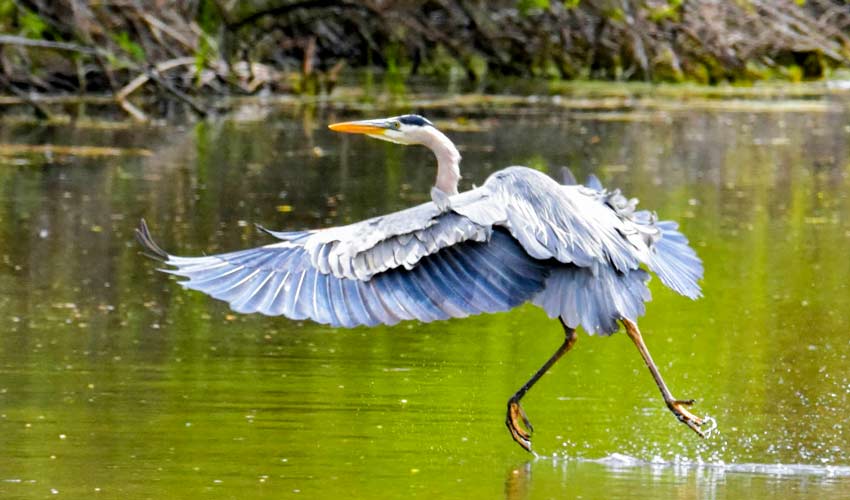
The Great Blue Heron is aptly named – you see one and you can just marvel at its greatness.
These wading birds are part of the heron family. They’re highly adaptable, thriving on all kinds of waters (even icy-cold ones).
Great Blue Heron Appearance
- Length: 91 to 137 cm
- Weight: 75 to 90 ounces
- Wingspan: 165 to 200 cm
When you see Great Blue Herons from afar, they look bluish-gray in color with a wide black stripe over their eyes.
But when you see these wading birds in flight, their feathers are two-tined with one side darker and the other side with pale bluish gray.
https://www.youtube.com/watch?v=6HQ0bCqCzEk
Where to find Great Blue Herons in West Virginia
Great Blue Herons are found along the edges of rivers, lakes, and wetlands of West Virginia.
These large birds often stand motionless or in slow-mo as they wait for their prey.
6. Eastern Bluebird
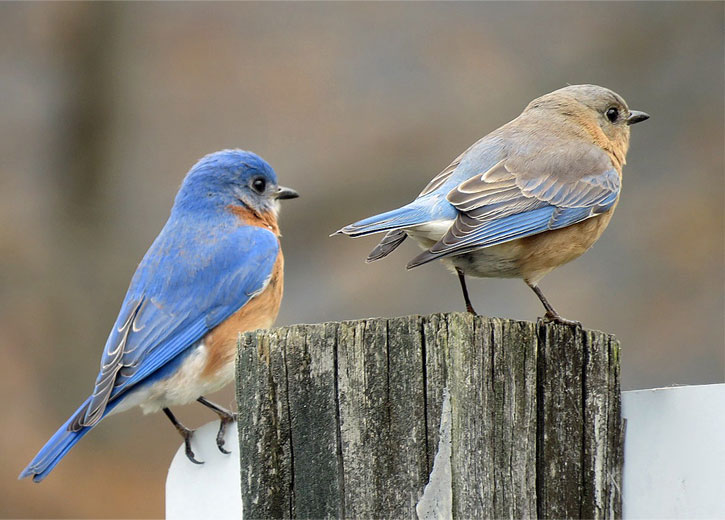
The Eastern Bluebird is the only one of the 3 bluebird species found in West Virginia all year-round.
Eastern Bluebird Appearance
- Length: 15 to 18 cm
- Weight: Around 1 ounce
- Wingspan: 25 to 32 cm
As you can see from the photo above, male and female Eastern bluebirds have a slight difference in feather color.
Male Eastern Bluebirds have vividly-blue feathers on their backs with a reddish-brown hue on their chests and throats.
Female Eastern Bluebirds look more grayish (instead of blue) thanks to the pale-blue plumage and a subdued orangey-brown chest.
They have very pretty calls as well.
Where to find Eastern Bluebirds in West Virginia
In West Virginia, they live in woodlands, fields, parks, golf courses, cemeteries, and other similar areas.
You can easily identify their two types of sounds: a flight call and a pleasing musical song.
7. American Crow
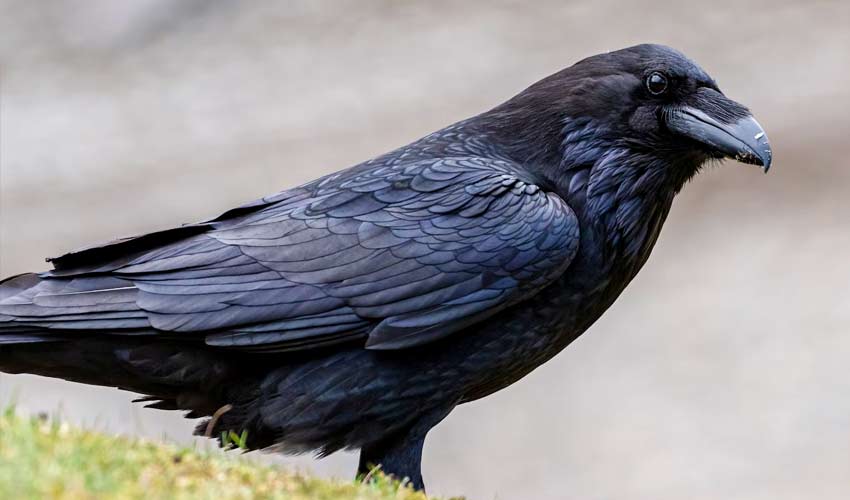
The American crow is one of America’s best-known birds and one of the most intelligent birds around.
American Crow Appearance
- Length: 40 to 55 cm
- Weight: 20 to 50 ounces
- Wingspan: About 75 cm
American crows are large birds with a completely coal-black look, from their heads to feathers, legs and bill, and even their eyes.
These crows are very easy to identify and since they are social creatures, you can find them forming flocks in the hundreds or more. American crows also have a distinct hoarse cawing voice.
I’m sure you’ve heard it a lot. Let’s take a listen.
Where to find American Crows in West Virginia
American crows live in the woods, treetops, parks, open fields, beaches, orchards, farmlands, and cemeteries where there are trees.
In West Virginia, they spend winter in areas with favorable roost sites and food sources.
8. Song Sparrow
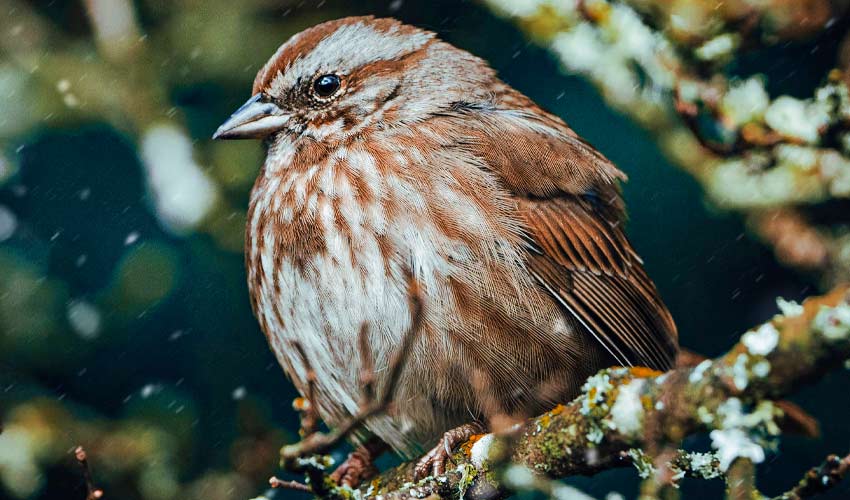
The Song Sparrow is one of the most familiar North American sparrows.
Appearance: What do Song Sparrows look like?
- Length: 12 to 17 cm
- Weight: 0.5 to 2 ounces
- Wingspan: 18 to 24 cm
Song Sparrows are small, brown, red, slate-gray birds with streaks of white and black on their chest and face. They have an adorably small beak, pronounced tail, and black round eyes.
As you can guess, the Song Sparrow has a distinct voice. Check them out here:
If you’re interested in other songbirds and their calls, cawks, trills and songs, check this post about PA songbirds.
Where to find Song Sparrows in West Virginia
Song sparrows are common sights in West Virginia, especially in shrubs, overgrown fields, wet open areas and forests full of trees, grasses, and weeds. They breed in the mountains of northern and western Virginia.
In the winter, Song sparrows are found throughout the state, even in backyards with feeders.
They normally feed on insects during spring and summer but switch to seeds in fall and winter.
Have You Spotted Other West Virginia Winter Birds?
So how do these birds survive the harsh winters of West Virginia?
Birds retain heat in their body core by fluffing out their feathers.
When you see birds looking fluffier in winter, it’s not because they’re gaining weight – this is often due to their natural way of thickening the insulation outside their bodies.
Also, many locals know that WV winter birds have limited food in nature and so help out with feeding stations in their backyards.
If you’ve been wondering how to help keep birds around West Virginia thriving even in winter, prepare peanuts, seeds, worm meal, and other feed outside your homes.
